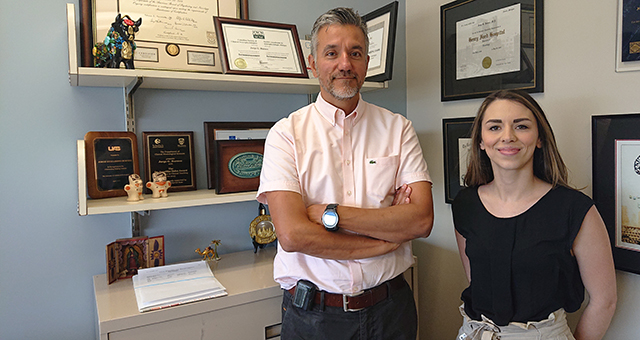

Epilepsy, a neurological disorder in which patients experience recurring seizures, can develop from a number of causes. Genetics plays a role in some cases while some develop as a result of conditions like stroke, tumours or head trauma.
“When a patient is diagnosed with epilepsy, determining the cause is very important to their care journey, including treatment decisions,” says Tresah Antaya, an MSc candidate in the Department of Epidemiology & Biostatistics at Western University's Schulich School of Medicine & Dentistry. Tresah is working with Dr. Jorge Burneo, Scientist at Lawson Health Research Institute and Professor at Schulich Medicine & Dentistry. “Unfortunately, around 35 per cent of epilepsy cases have no known cause. This indicates that there are causes that have not yet been identified.”
Air quality has been proposed as one potential cause. Research shows that air quality affects brain health, but only a few short-term studies have explored the relationship between air quality and epilepsy. While these studies show a relationship between air pollution and seizures, it remains unclear whether air pollution triggers seizures in those who already have epilepsy or if air pollution contributes to the actual development of epilepsy.
A team of researchers at Lawson and Western are working to unravel this mystery. In a new study, they will examine data from the 2006 long-form Canadian census as well as environmental and health care data to determine whether long-term exposure to air pollution and city noise increases a person’s risk of developing epilepsy.

The team will examine exposure to different air pollutants and city noise from January 1, 2006 to December 31, 2010 in those who responded to the 2006 long-form Canadian census. This will include exposure to pollutants like nitrogen dioxide, ozone, fine particulate matter and sulfur dioxide and to city noise from sources like traffic and construction. Exposure to these potential risk factors will be determined using respondents’ postal code information and datasets containing historical climate and environmental records.
They will then use health care administration data to determine if those exposed to higher levels of air pollution and city noise were more likely to develop epilepsy. They will also determine whether other factors play a role, such as age, sex and neighbourhood characteristics like average precipitation amounts and proximity to parks.
“People with epilepsy typically have issues with mental and physical health, and are at a higher risk of death compared to healthy individuals,” says Dr. Burneo. “It’s critical that we understand what caused a person to develop epilepsy in order to provide the best treatment and reduce their risk of additional seizures.”
If the team finds that environmental factors are a cause of epilepsy, they hope their research can lay the foundation to identify treatments that are effective in suppressing seizures for this population.
“We hope our research can further our understanding of epilepsy and then help to advance treatment options,” explains Tresah. “We also hope it can provide insight to encourage politicians to make decisions that reduce Canadians’ exposure to any newly-identified risk factors.”
The project is being supported by a Studentship Award through Lawson’s Internal Research Fund (IRF).
“Internal funding competitions and studentships like Lawson’s IRF enable researchers to financially support trainees to complete research of mutual interest,” says Tresah. “Trainees gain subject-specific research skills through practical experience without the financial stress that often accompanies the pursuit of higher education.”
In addition, the project is receiving funding through the Collaborative Research Seed Grant competition from the Schulich School of Medicine & Dentistry at Western University.
It is the first research project to be conducted by London’s Neuroepidemiology Research Unit (NeuRU). Founded by Dr. Burneo, NeuRU is a group of scientists interested in using population-based epidemiological research methods to study neurological disorders.